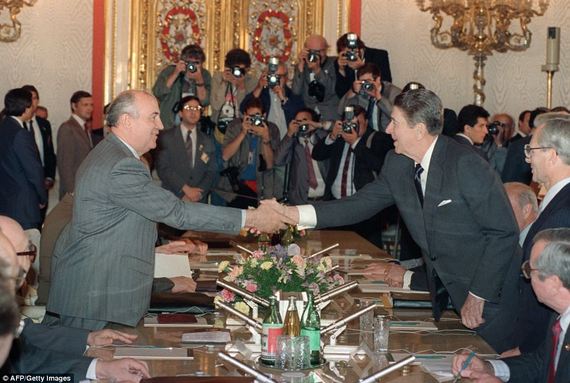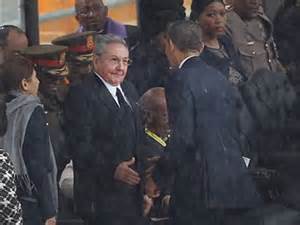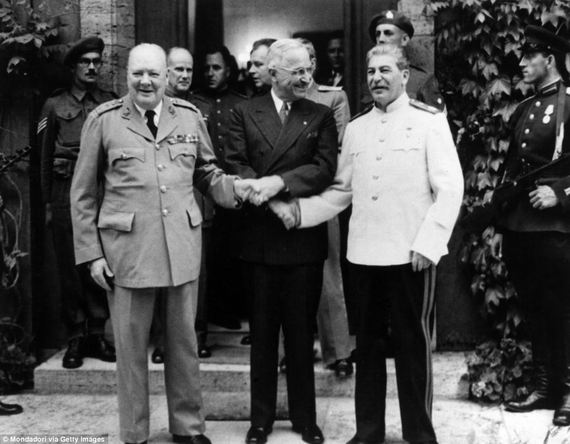Millions of astounded viewers watched as President Barack Obama and Cuban leader Raul Castro shook hands on live television in an unplanned moment at the South African Memorial Service for legendary peacemaker Nelson Mandela. Could this handshake mark the beginning of the thaw in the longstanding Cold War impasse between Cuba and America?
The handshake, our personal calling card, is critical to making the all-important first impression, and rarely do we practice, or even think about, the handshake. It is a small gesture with big, even world-changing, impact.
Touch is the strongest of our five senses. Obama gave Castro a full handshake with a head nod, eye contact, hand pumping. A total and committed visceral connect; purposeful and extended. And the message was powerful.
It was our nation's third president, Thomas Jefferson, who mainstreamed the modern handshake as a common greeting. He based it on a variation on how Native Americans greeted each other, and it has played a crucial part in connecting world leaders ever since.
Here are four tips to help you achieve success with the perfect presidential handshake.
TIP #1:
Not too weak, not too strong: Qualified job candidates can lose out simply because of a poor handshake. Studies show that a limp or awkward handshake can be a conversation stopper, and can negatively affect everything that follows. Conversely, overly strong handshakes can be used as an inappropriate display of power and control. Correct a bad handshake by placing your other hand over theirs. Politicians do that all the time so that it becomes a connected encounter. It's critical not to let a bad handshake linger.
Cuban President Fidel Castro shakes hands with Vice President Richard Nixon at a Washington DC press reception in 1959 (Photo courtesy of Getty Images)
TIP #2:
We mirror what we see: Our 42nd President, Bill Clinton, strategically extends his hand earlier than most people, and when he does, the other person is more likely to extend theirs, increasing the intimacy. The other person thinks, "He cares. He's focused on me!" Clinton also touches the arm and/or shoulder of the other person with his left hand, increasing the contact as well as the level of bonding.
JFK shakes hands with Soviet statesman Nikita Khrushchev at the US Embassy in Vienna (Photo courtesy of Getty Images)
TIP #3:
Sequence of success: By starting the handshake at a farther distance, you connect seconds longer than the normal too-late handshake. The space between the index finger and thumb must dovetail exactly with the other individual ("web to web"). And when greeting someone who wishes to demonstrate feelings of superiority by firmly grabbing your hand with an over-arm grasp (ending with their hand "on top"), simply place your left hand on top of theirs (who's on top now?!).
Reagan shakes hands with Soviet leader Mikhail Gorbachev at their final summit meeting in 1988 (Photo courtesy of AFP/Getty Images)
TIP #4:
Not everyone "shakes!": You always need to make the overture, but if your handshake is not returned, you need to tip your hand toward your partner (a quick up-and-down motion) and then place your right hand into your left. This gesture is called the "teacup" - you tip your hand to your partner and place it back in the "saucer." The greeting will then be complete and no one will feel awkward.
Your handshake is your calling card. Apply these tips the next time you're looking to influence, persuade or establish credibility. When it comes to connecting and impressing, hands down, hands have it.



